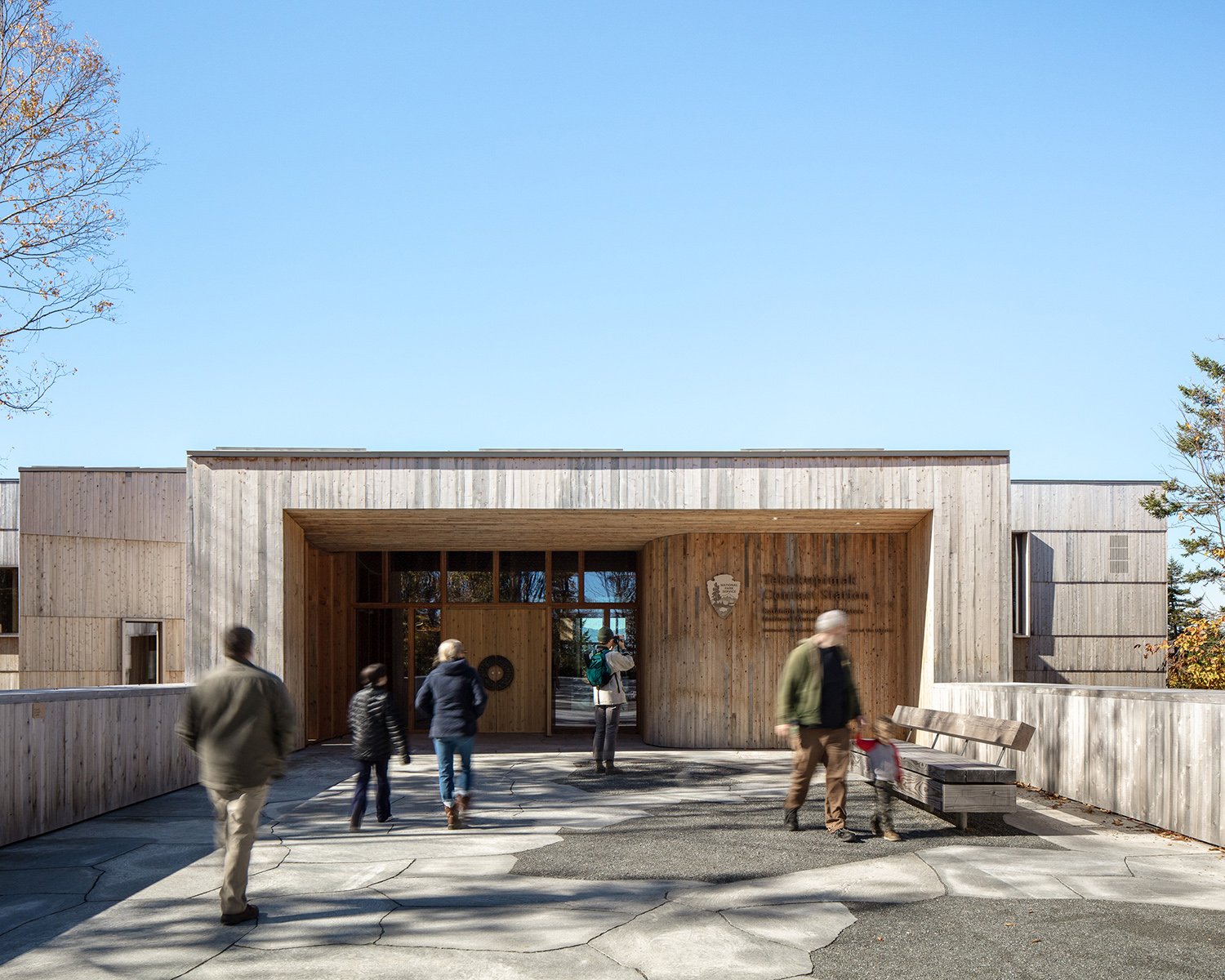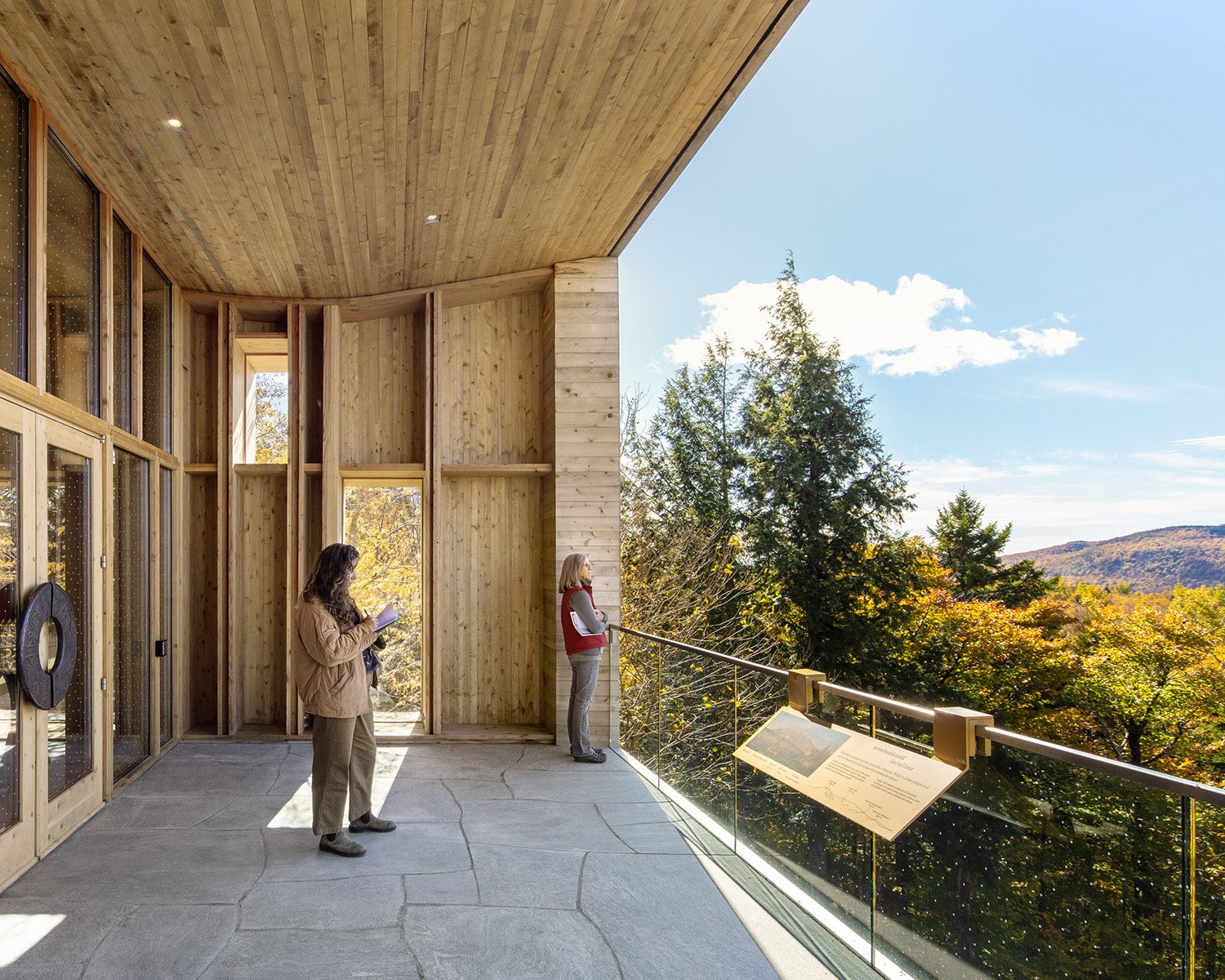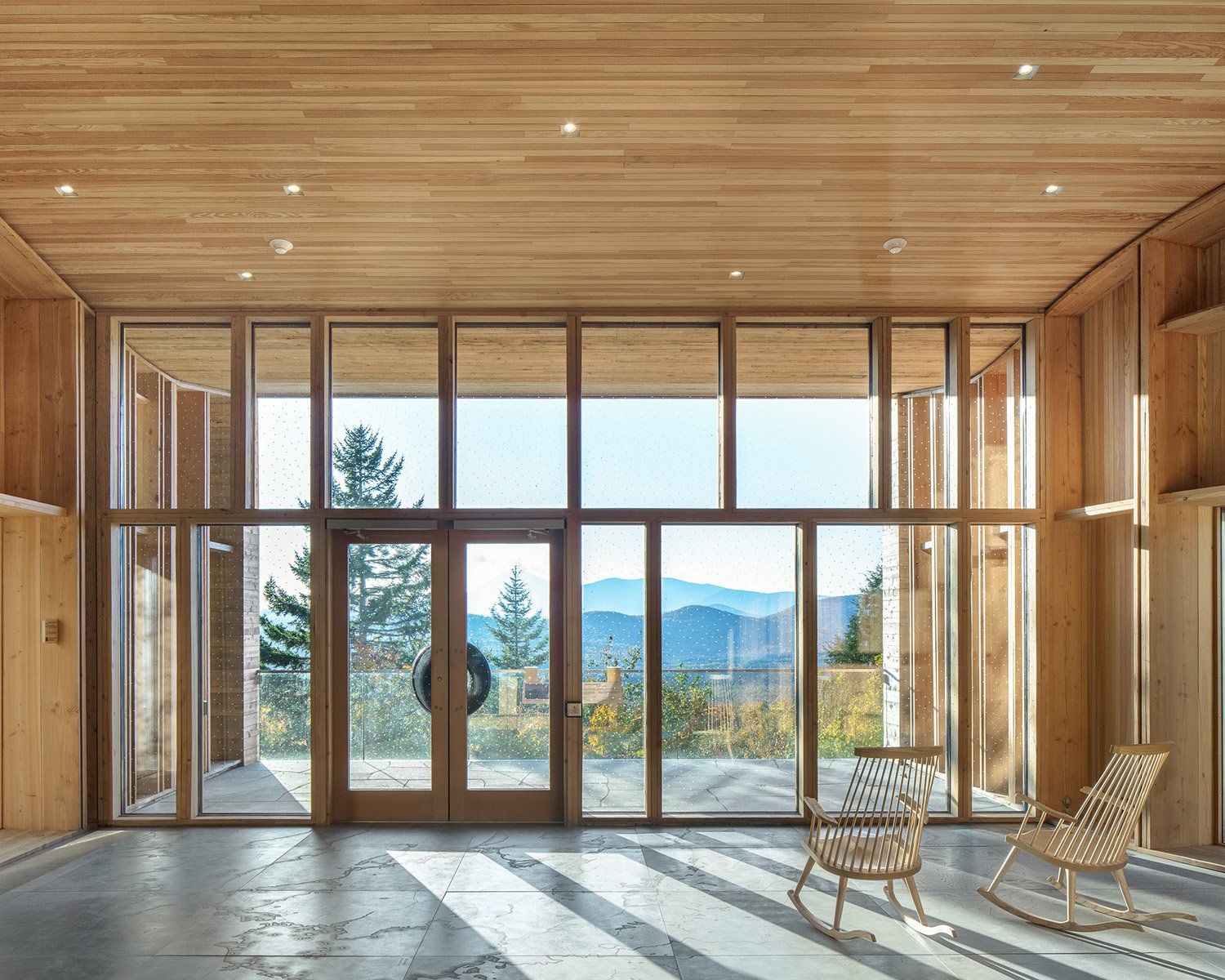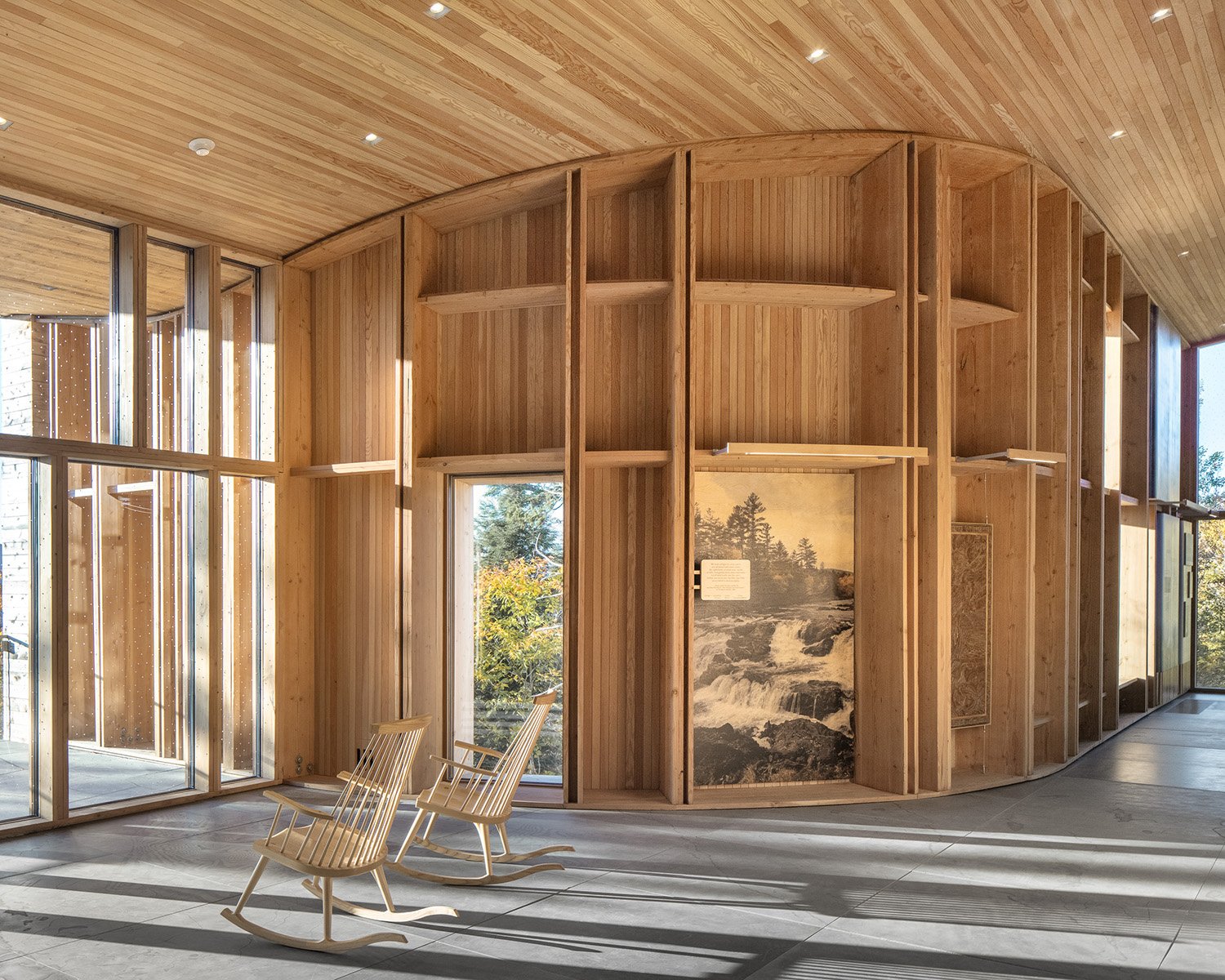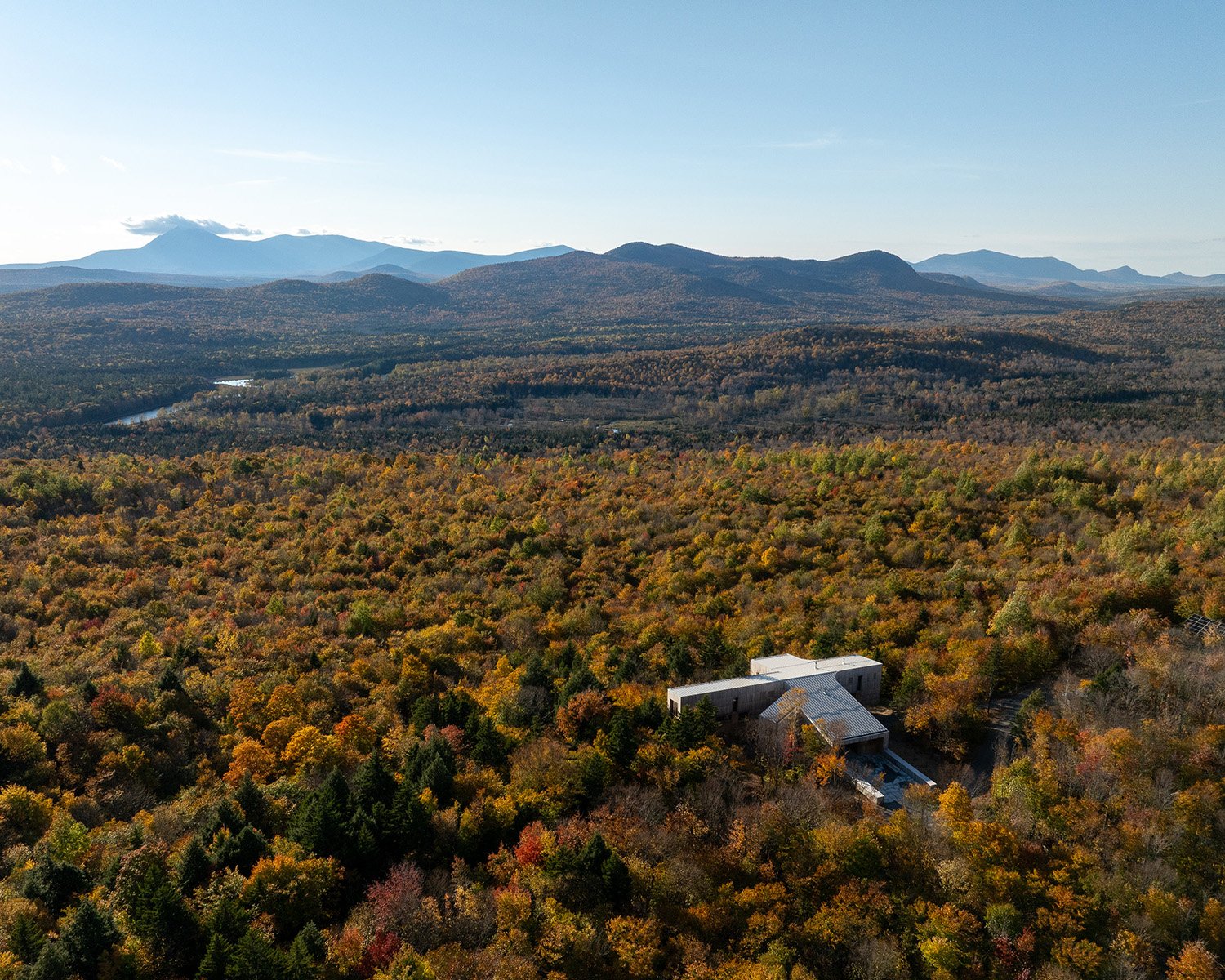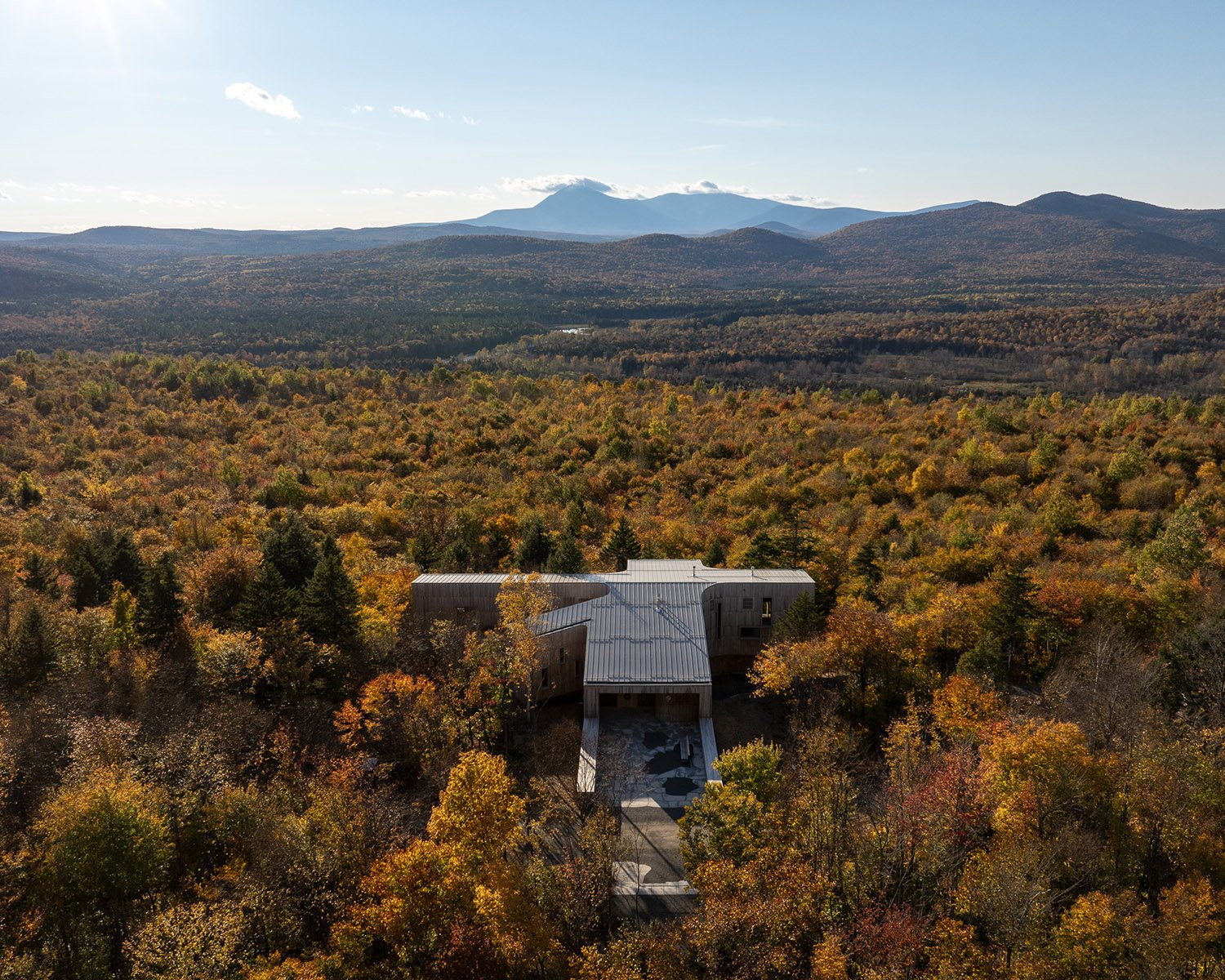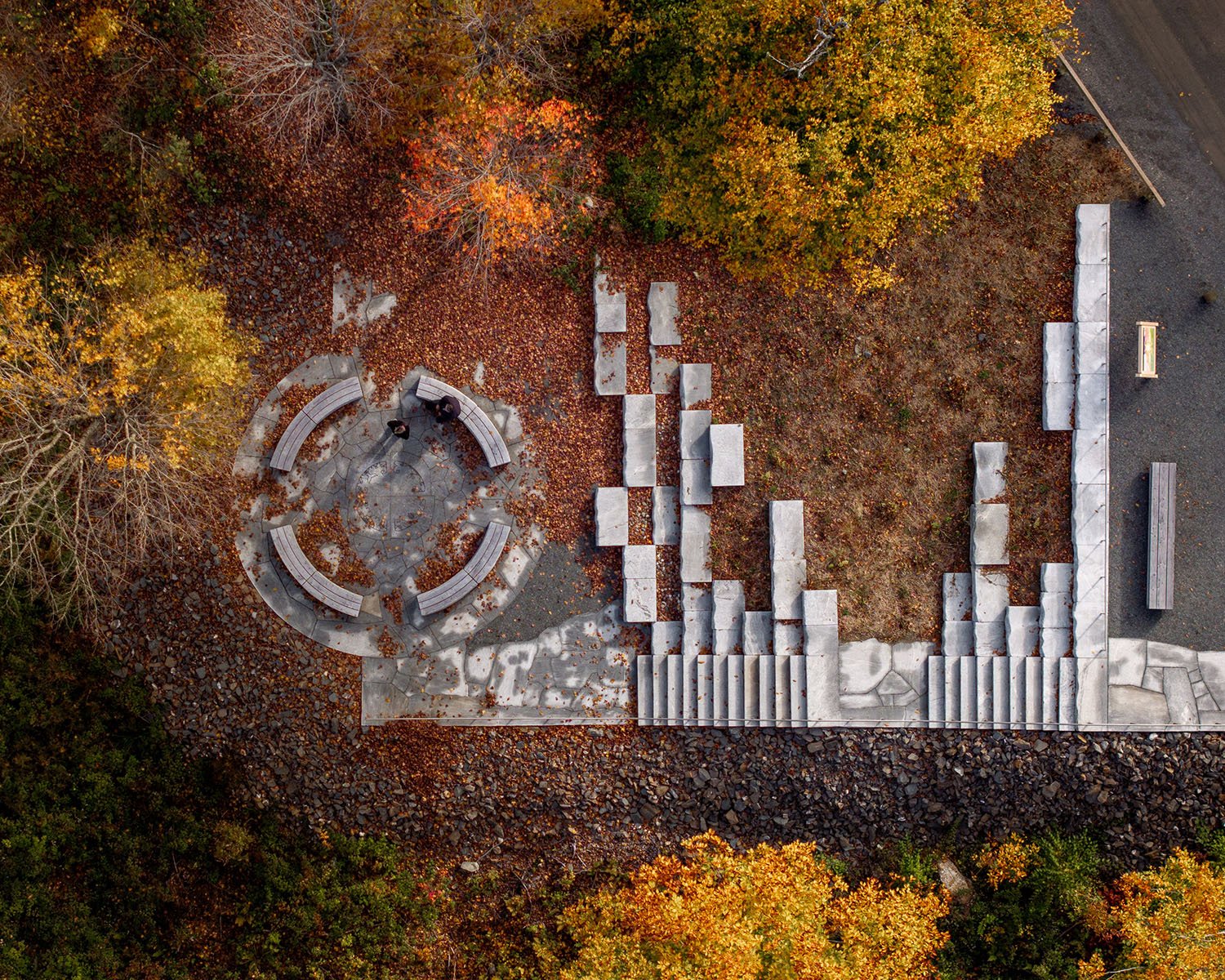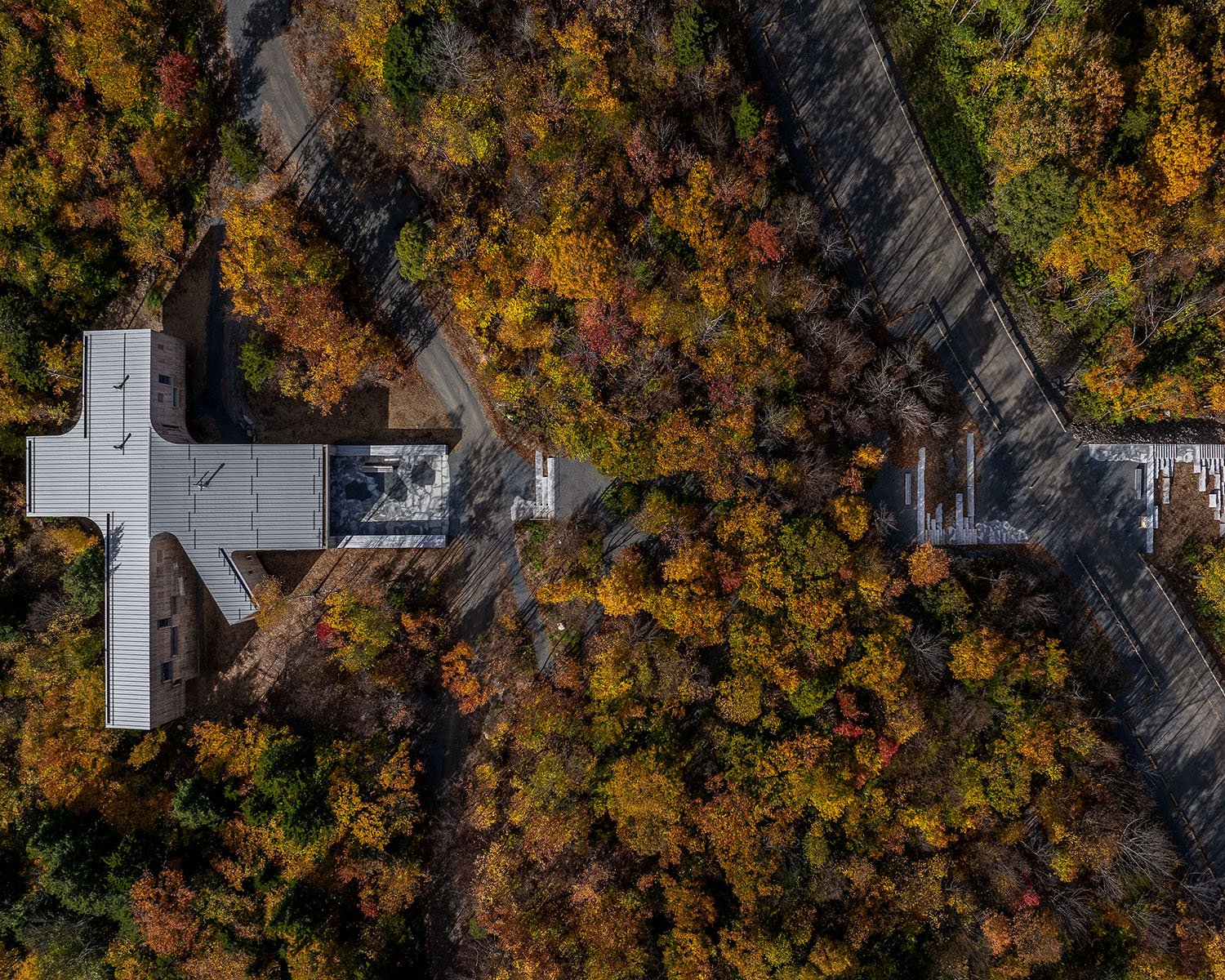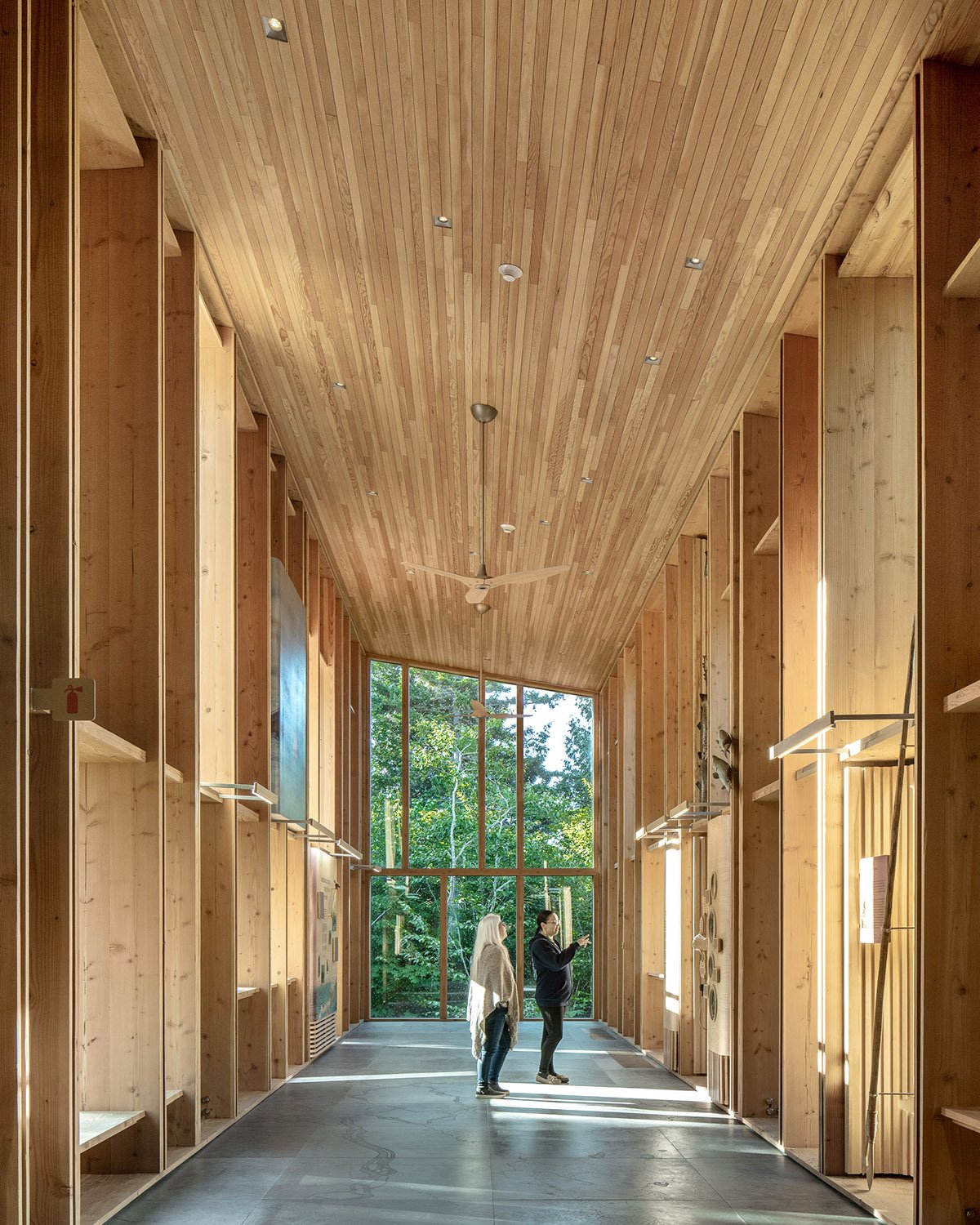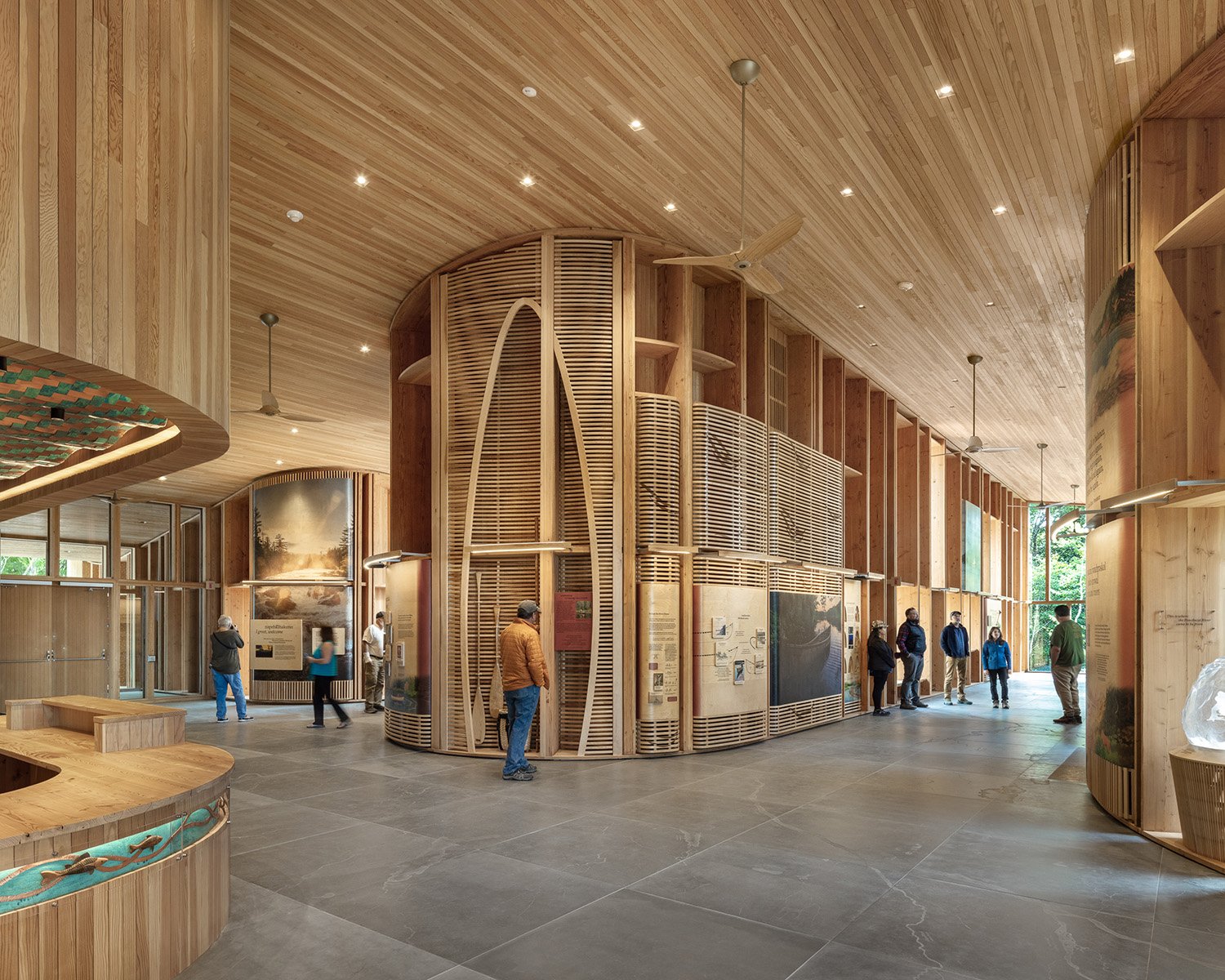
The breathtaking Katahdin Woods and Waters National Monument, in Maine, holds profound significance for the Wabanaki people, a community that includes the Maliseet, Mi’kmaq, Passamaquoddy and Penobscot Nations. Any architectural intervention in this setting, which was recently returned to Indigenous stewardship, needs to recognize the importance of the place, and of the people who have taken care of it for over 11,000 years. Tekαkαpimək Contact Station — a 735-square-metre off-grid building by Saunders Architecture on a nine-hectare site — does exactly that.
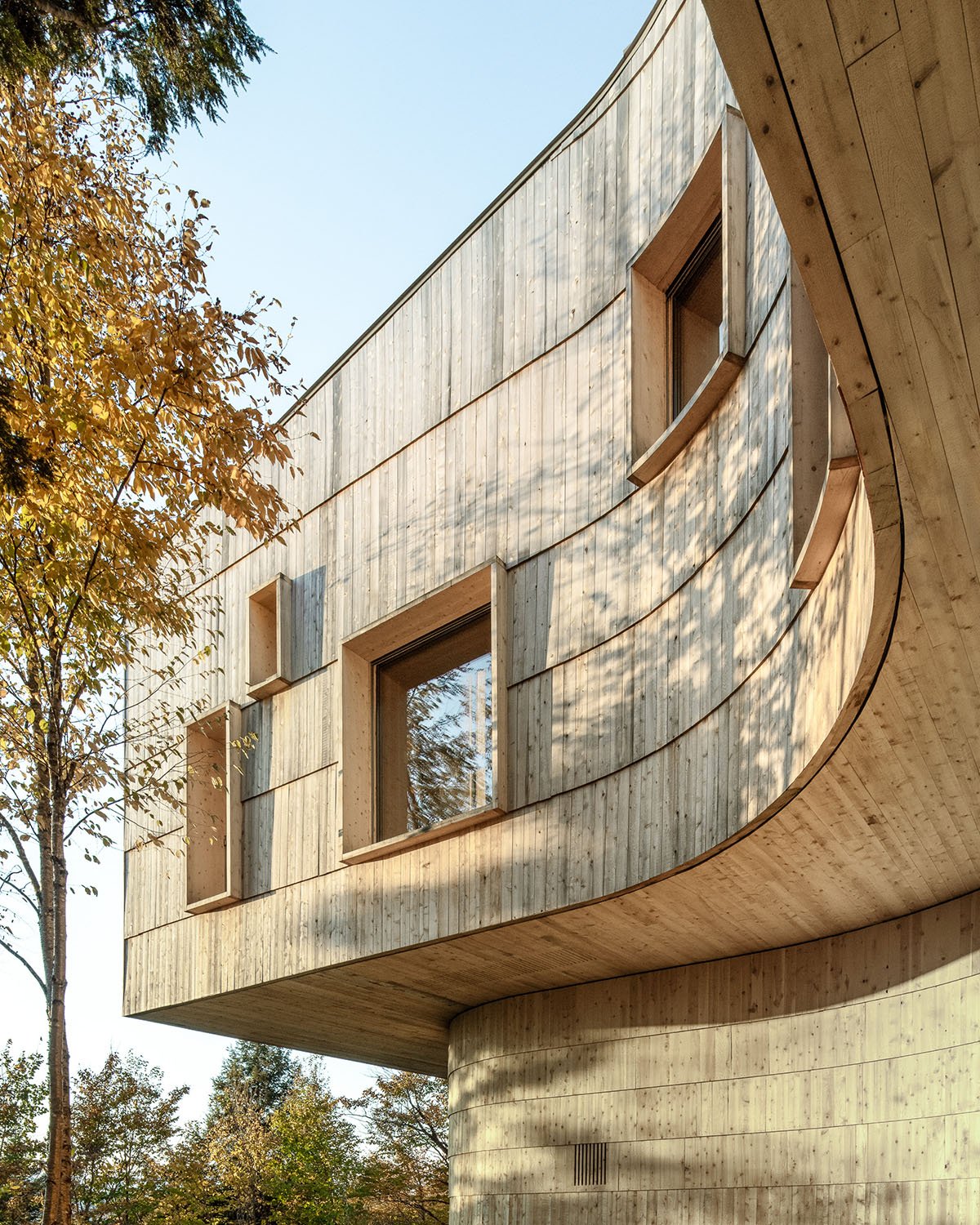
Developed through a uniquely collaborative process with the Wabanaki Nations, the cantilevered building stretches its arms out to the four cardinal directions and harmonizes with the landscape. Its name, which means “as far as one can see” in Penobscot, reflects its purpose of welcoming visitors to the Penobscot homeland atop Lookout Mountain. The structural frame is made from 165 custom-built Douglas fir glulam columns, which were laminated over a nine-month period in a former potato barn in Patten, Maine; the cladding is composed of locally harvested and milled raw cedar, which blends into the surroundings. Allowing visitors to greet the first light, an eastern lookout and a gathering circle were strategically placed to honour Wabanaki traditions. Inside, the Douglas fir–panelled walls serve multiple functions (besides structural support, they integrate seating and frame views of the natural landscape), while handcrafted elements such as bronze entry door handles carved by Gabriel Frey (Passamaquoddy) and ceramic tiles handcrafted by Wabanaki artisans reinforce the cultural significance of the space. All Indigenous cultural knowledge and intellectual property in this building will remain in the hands of the Wabanaki Nations.
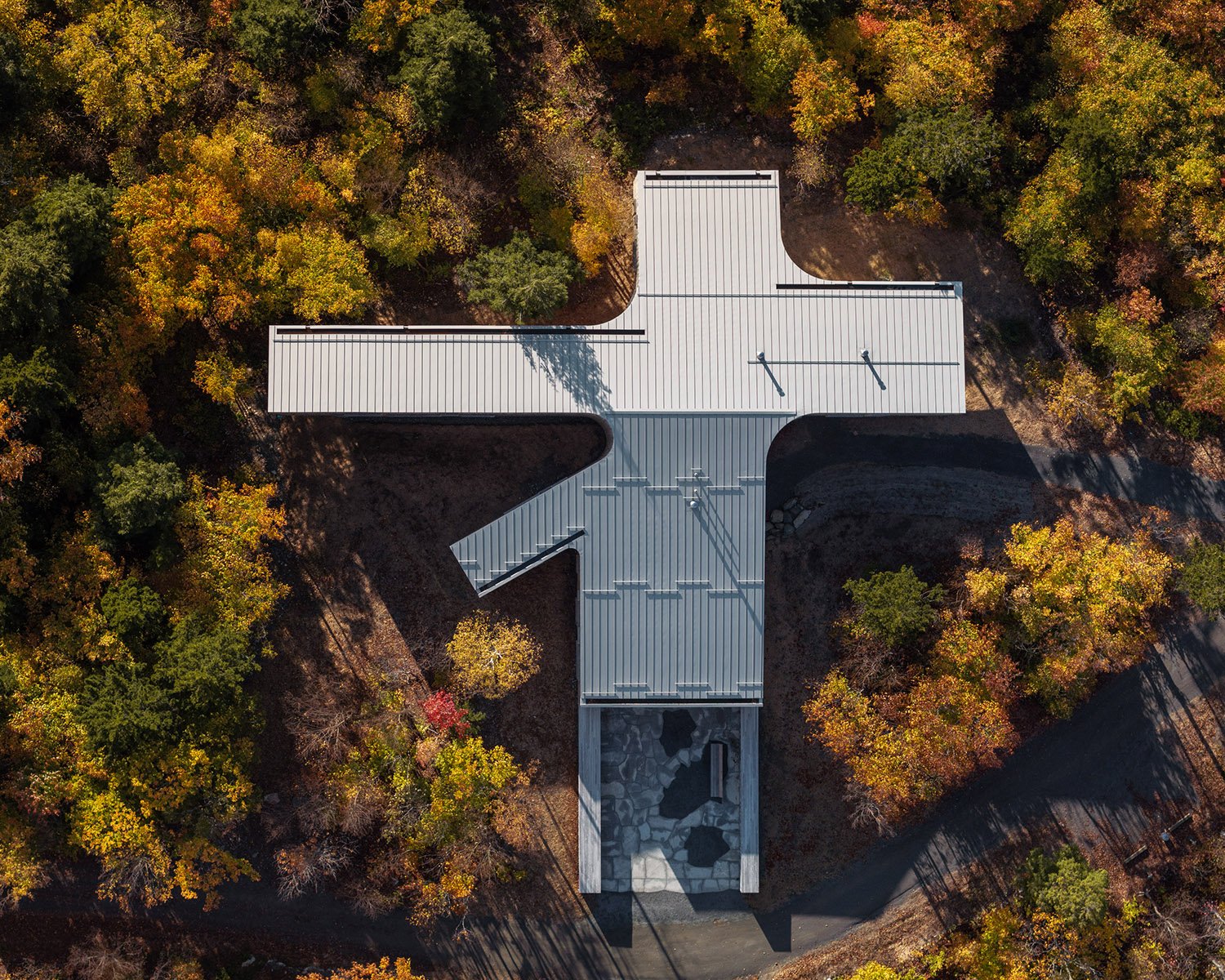
Just as it actively involved Wabanaki people in the design process, Tekαkαpimək intentionally centres their knowledge and stories in educating future generations. As it contends with the painful history of settler colonialism, it also nurtures cross-cultural expressions of growing trust and creativity. The building and its surrounding landscape serve as a powerful pedagogical tool, demonstrating how architecture can embrace Indigenous perspectives, honour history and promote environmental stewardship. They also exemplify how architects can collaborate with Indigenous peoples — on their land, supporting their sovereignty and with their best interests at heart.
Team: Todd Saunders with Ryan Jorgensen and Eva Barath
Developed through a uniquely collaborative process with the Wabanaki Nations, the cantilevered building stretches its arms out to the four cardinal directions.

